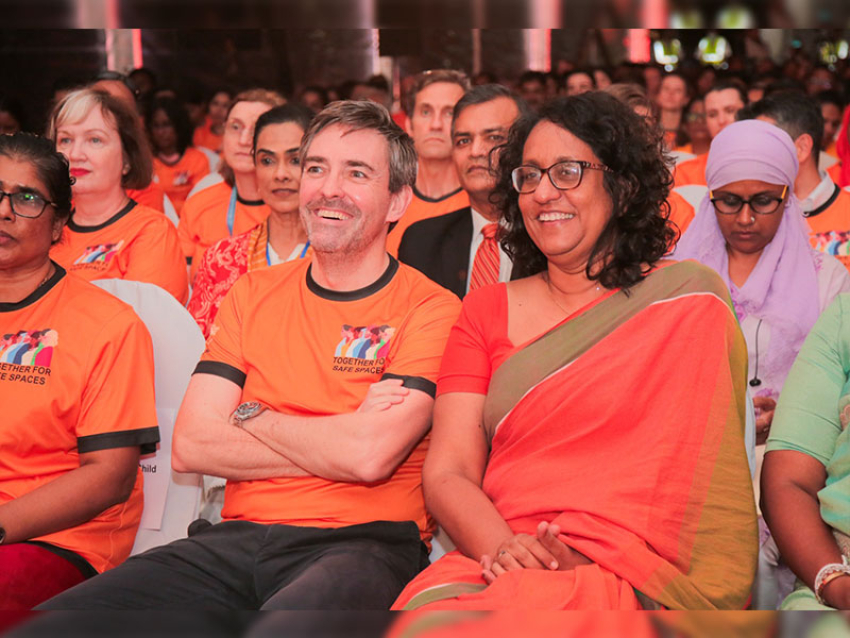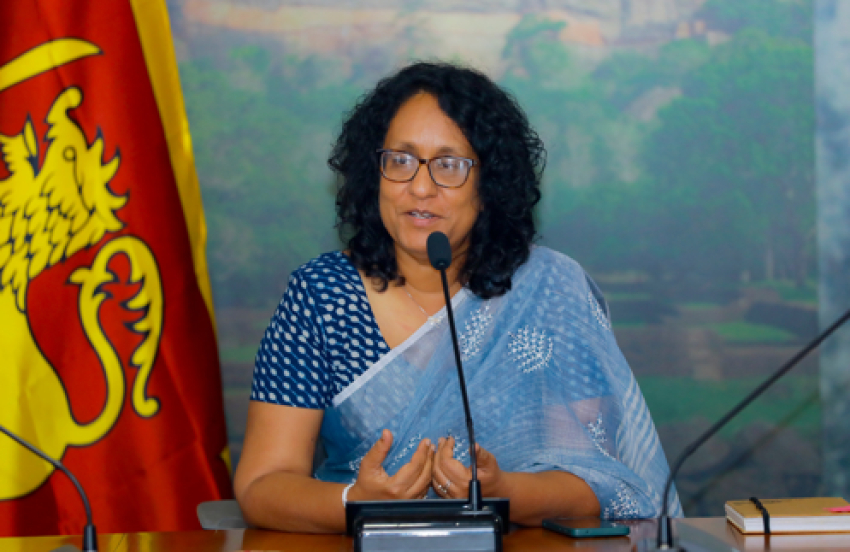Chile’s desiccated Atacama Desert was once considered a dead zone, but it hides great riches that could help us tackle a major threat to human health.
By Tom Garmeson
Staring out across the desolate landscape of Valle de la Luna, the idea seems counter-intuitive.What could the world’s driest desert, home to some of the most extreme levels of ultraviolet radiation on Earth, have to do with fighting disease? But as Michael Goodfellow, a microbiologist at Newcastle University, explains, the Atacama Desert’s inhospitality is exactly what could make it useful to us.“The premise was that since the conditions are so harsh in the Atacama Desert, organisms become adapted to those conditions,” he says. Goodfellow hoped that if bacteria had managed to survive in such a hostile environment, they would likely produce novel chemical structures which could have important medical applications.
In 2008, he was handed a soil sample taken from the desert’s hyper-arid core, parts of which are thought to have experienced virtually no rainfall for millions of years and were once considered beyond the dry limit for life. “Quite frankly, we didn’t expect to isolate anything,” Goodfellow admits. But to his surprise, he was able to grow a diverse population of bacteria from the sample, sparking a decade of research into the desert’s microbial fauna.
New species of bacteria are being unearthed in the Atacama desert that could help us fight back against the spread of drug resistant infections (Credit: Tom Garmeson)
It was the type of bacteria living in the Atacama that proved particularly exciting: a spore-producing phylum named actinobacteria. In microbiology circles, actinobacteria are renowned for their ability to secrete organic chemical compounds known as secondary metabolites, which help them fend off rival microbes.Take streptomyces griseus, for example, a species of actinobacteria you might find in a handful of garden soil. A sample of streptomyces, when placed in a colony of mycobacterium tuberculosis, will release a chemical which stops its bacterial neighbours from growing the proteins they need to survive. When scientists at Rutgers University managed to isolate this chemical in 1944, they had chanced upon the first antibiotic treatment for tuberculosis, saving countless lives in the process.
A total of46 new molecules have been isolated from Atacama bacteria so far, many of which show antibiotic, antiviral or anticancer propertiesThe new species of desert actinobacteria studied by Goodfellow and others have proven to be capable chemists themselves. A 2018 review counted a total of 46 new molecules that have been isolated from the Atacama strains so far, many of which show antibiotic, antiviral or anticancer properties. While Goodfellow stresses that there aren’t any solid drug leads yet, the results show the desert is a promising place to search for antibiotics.
Life at the edge
The Atacama is a prime example of what scientists have dubbed the “extremobiosphere” – areas of the world where factors such as high aridity, UV radiation, pH or pressure have pushed life to the limit. Recent years have seen researchers scour the globe for ever more hostile habitats, where they have invariably found hardy colonies of bacteria surviving against the odds.
In 1998, a Japanese submersible brought back barophilic bacteria from sediments in the Mariana Trench, 11,000m (36,000ft) below sea level. These bacteria are able to thrive at pressures 700 times greater than those at the surface. In 2009, geomicrobiologist Jill Mikucki announced the discovery of a population of microbes living beneath 400m of glacial ice in Antarctica, which have survived for millions of years by sapping energy from iron deposits. Whether they are making their home on a freshly erupted Icelandic volcano or lying dormant for millennia in Siberian permafrost, bacteria truly have colonised the world.
Parts of the McMurdo Dry Valleys in Antarctica have not seen rain for centuries yet scientists are still finding bacteria flourishing in this harsh
This body of exploratory research has reshaped our understanding of the limits for life, teaching us about the ingenious ways in which bacteria have evolved to tolerate their surroundings. But it is perhaps the looming spectre of antibiotic resistance that provides the most pressing reason to explore extreme ecosystems.
Superbugs – pathogens which have learnt how to shrug off our antibiotic assaults – are already thought to be responsible for hundreds of thousands of deaths worldwide each year. The World Health Organization describes them as “one of the biggest threats to global health, food security, and development today”. Making matters worse, just as our most trusted drugs began to fail, the end of the 20th century saw the pipeline for developing new antibiotics slow to a trickle.
Bioprospecting
While public health bodies around the globe plead with doctors, patients and farmers to use antibiotics responsibly to help stem the spread of superbugs, there is general agreement on the need for the development of new drugs. Sometimes, a potentially useful chemical can be found right in front of our noses – in 2016, German researchers discovered a previously unknown antibiotic in a human nostril which was capable of killing drug-resistant Staphylococcus aureus, otherwise known as MRSA. In other cases, entirely synthetic molecules can prove to be antibiotic hits.
But many scientists argue that we should also be exploring the natural world for novel biochemistry, an approach known as “bioprospecting”. Marcel Jaspars, a natural product chemist at the University of Aberdeen, is one such advocate. “70% to 75% of all antibiotics come from nature,” he notes. “It strikes me that we should be looking more deeply into how nature makes these molecules and how we can actually find antibiotic compounds.”
Streptomyces sp. isolated from Salar de Huasco, Chile (Credit: Cristina Dorador)
Bacteria isolated from desert soil in northern Chile could not only provide antibiotics but also new types of sun protection and industrial catalysts (Credit: Cristina Dorador)
And it is extreme, seemingly lifeless locations like the Atacama that seem to be the most promising places to find new weapons in the fight against antibiotic resistance. Advances in genetic sequencing have shown that the dry valleys of Antarctica, whose cold, arid soil is thought to be unique in the world, are home to much greater actinobacterial diversity than once thought. Exploration of the deepest ocean trenches has led to the discovery of a whole new class of chemicals, named “abyssomicins” in honour of the depths at which their bacterial creators were found. From the Merzouga sand dunes in southern Morocco to the Badain Jaran and Tengger deserts in China, microbiologists around the world are building an ever-growing library of compounds that display bioactive properties.
It is worth noting that many of the molecules extracted from these extreme bacteria will probably never become drugs. For every world-changing antibiotic like penicillin, scientists have unearthed countless chemical compounds which are either too toxic or simply not effective enough to be medically useful.
Their tolerance to UV radiation could prove useful in the cosmetics industry as it looks to find ways of protecting human skin from damage by sunlight
But according to Chilean microbiologist Cristina Dorador, an expert on the Atacama microbiome, there are many other reasons we should value her invisible research subjects. The desert bacteria’s ability to withstand high aridity and salinity might help plants grow in poor conditions, she says. And their tolerance to UV radiation could prove useful in the cosmetics industry as it looks to find ways of protecting human skin from damage by sunlight.
Scientists taking samples in Salar de Ascotan, northern Chile (Credit: Cristina Dorador)
Deserts like the Atacama and other extreme environments have become the focus of scientists who are "bioprospecting" for potential new drugs (Credit: Cristina Dorador)
Researchers have also described the bacteria’s potential as industrial biocatalysts – Dorador suggests their ability to metabolise inorganic matter could be employed in the Atacama’s copper mining industry, which forms the backbone of the Chilean economy. She says the bacteria’s adaptation to their desert environment might make them especially suited to aiding in the extraction process.
And researchers may have only just scratched the surface of the Atacama’s potential. It is thought that only around 1% of all microorganisms in the natural world have been isolated and cultivated (grown in a lab), but new genetic sequencing techniques are helping researchers like Dorador to get a sense of what else is out there.
“We know that they are there, that we have great microbial diversity, but we don’t really know what their effects are, nor their potential,” she says. “There really is a whole microbial universe to discover in the Atacama Desert.
Antibiotic resistance
Six grand ideas to fight the end of antibioticsOveruse of antibiotics has led them to becoming less and less effective to treat us when we’re sick – leaving scientists scrambling for a fix. Here are some of the best ideas to tackle one of the 21st Century's biggest challenges.
By Erin Biba
The wrld is nearing a moment when antibiotics no longer work to treat infections. We are severely over-using the antibiotics we have – and that system is causing bacteria to evolve and develop resistance to the drugs intended to kill them.Appropriately, the phenomenon is referred to as antibiotic resistance, and it’s shaped up to be one of the biggest challenges we face in the 21st Century.
All you need to know about the ‘antibiotic apocalypse’
The viruses that could save humanity
Is the ‘end of modern medicine’ near?
The stakes are high. The good news? A whole slew of governments, organisations, innovators, and scientists across the globe is pondering how to get us out of this mess. Here are just a few of the many methods being employed in the fight against antibiotic resistance.
Antibiotic resistance
One of our most urgent public health problems, antibiotic resistance occurs when a drug kills sensitive bacteria but resistant ones remain and multiply
USING BACTERIA AGAINST ITSELF
If drugs fail, why not fight fire with fire?Several new biotech companies are hoping to use our growing understanding of the human microbiome: healthy microbes that live in the human body, which boost our immune system, prevent infection, and regulate metabolism. It could help develop a new class of drugs that fight superbugs – infections resistant to drugs, expected to kill more people than cancer by 2050.We are severely over-using the antibiotics we have
Vedanta Biosciences, based in Cambridge, Massachusetts, is one firm basing its drug development on the new thought that many bacteria may cause infection because the patient has depleted their own microbiome through overuse of antibiotics. Vedanta is using research conducted on the microbiome around the world to identify good bacteria that they can put in pill form – a swallowable solution that will then enter the gut and stimulate immune response.
“Microbiome-based therapies such as bacterial consortia are a much-needed alternative to antibiotics. It is important to look for new ways to treat infection that are both less prone to eliciting resistance and do not damage the microbiota and thus render the host vulnerable to reinfection,” says Bernat Olle, Vedanta CEO.
It is important to note, however, that scientists still do not fully understand the human microbiome. But research into how it works is moving at a quick pace and Vedanta is nearing the clinical trial stage for at least two of its drugs. If they work, it could be a game-changer for fighting infections.
DEPLOYING TINY SEMICONDUCTORS
This idea comes from researchers at the University of Colorado, Boulder, who were working on developing quantum dots for use in harnessing solar energy to make fuel. What are quantum dots? Small crystals of semiconductors – the material we use to make phones and computers. (Small is an understatement. As Prashant Nagpal, a UC researcher on the project says: “A quantum dot is to the width of a hair roughly what a city block is to the Earth.”)
Antibiotic resistance
Quantum dots help with imaging cancer research, as seen here, but they're also being used to fight superbugs that are resistant to antibiotics (Credit: Science Photo Library)
Together with colleague Anushree Chattetrjee, who works on developing new therapies for antibiotic treatment, Nagpal wondered if the light-responsive dots could be used to fight superbugs. The result was a new form of quantum dots that can selectively target bacteria.
“What it could mean is that these quantum dots can be present everywhere, and when developed completely as a therapy, they can be activated by light to clear infections in animals or humans without killing the host mammalian cells,” Nagpal says. When activated, the dots produce just enough a substance that is toxic to bacterial cells, but harmless to the host’s own cells.
When testing the dots in cell cultures, the dots had no effect on healthy human cells. And light exposure to activate them could be as little as a room light or the sun (or a more directed LED for deeper infections).
They could theoretically be so effective, that they would only require a one million-times smaller dose than traditional drugs.
Quantum dots are easily and cheaply manufactured so scaling them up to treat infections on a worldwide scale would cost just a few cents (or less) per dose.
“A minuscule amount of drug with some light can treat some of the worst superbug infections we tested in clinical strains acquired from a Colorado hospital,” Nagpal says. “Of course, more work and extensive studies in preclinical and clinical trials need to be done before we can administer these quantum dots to patients. However, this initial study shows a lot of promising features.”
INFECTION-KILLING POLYMERS
Antibiotics may not be the only answer to fighting superbugs. Researchers at the University of Melbourne have discovered a totally unconventional method of killing deadly bacteria.
Turns out a star-shaped polymer (a chain of molecules) that they engineered 15 years ago to add viscosity to automotive paints and engine oils has some interesting abilities when it’s re-purposed for biological uses. While researching the polymer’s ability to deliver drugs to treat cancer, the scientists realised that a version of the star called Snapp (Structurally Nanoengineered Antimicrobial Peptide Polymers) had become toxic to bacteria.
Among other ways of killing the bugs, it has the ability to rip apart their cell walls by becoming absorbed into the cell’s membrane and pulling out its lipid layer.
Grand Ideas
The 21st Century is continually throwing us new challenges and expecting us to adapt – but for every Earth-shattering megatrend, there are dozens of genius solutions. Follow them all in BBC Future's special series, Grand Ideas.
If funding comes through, the researchers think they could be testing this method in humans within five years. “Our star synthesis is an engineering process and can be easily scaled up. It is also not very expensive. The regulatory approval will likely be the slowest step,” says chemical engineer Greg Qiao, whose lab at the Melbourne School of Engineering is responsible for the work.
GETTING OUT OF SILOES
One of the biggest problems in medicine, and science in general, is that researchers don’t always work directly with doctors to solve health problems. That means they tend to miss out on key data that can only be gleaned by working directly with patients.
At the Antibiotic Resistance Center at Emory University in Georgia, clinicians and research scientists are working together to better understand how to diagnose and treat resistance. “I’m not a doctor. I need to know from the clinicians a lot of what they’re seeing on the front lines to help guide our research to be as relevant as possible,” says David Weiss, director of the center.
One of the biggest results of this partnership so far has been the development of a new diagnostic test to help doctors discover what bacterium is responsible for resistance inside a patient that’s not responding to antibiotics. Based on the success of this model, Weiss says, other clinical institutions are starting to open their own versions of the centre that brings researchers and doctors together.
BRIDGING ACADEMIA AND INDUSTRY
The world desperately needs new antibiotics, but drug companies haven’t developed a new one in 30 years. That’s because drug development is extremely expensive and there’s little profit in the final product.
To address this, Pew Charitable Trusts, a public policy non-profit in Philadelphia, has developed the Shared Platform for Antibiotic Research and Knowledge (Spark). It’s a cloud-based, virtual library of antibiotic research data and analytics that scientists can use to work together on building new discoveries. “Similar data-sharing resources have successfully catalysed drug discovery in other research areas such as cancer, neglected tropical diseases, and tuberculosis,” says Kathy Talkington, director of the antibiotic resistance programme at Pew Charitable Trusts. “We hope that Spark will do the same for antibiotic-resistant bacteria. We expect it to be publicly available, and open for use by researchers from around the world, within the next year.”
The hope is that allowing scientists to work across different disciplines, develop new methodologies for antibiotic discovery, and work within academia and the industry could be the key to ending the years-long drought in new antibiotic development.
One of the biggest problems in medicine, and science in general, is that researchers don’t always work directly with doctors to solve health problems
The US Centers for Disease Control (CDC) is also responding to the problem with a network of their own. Specifically, the Antibiotic Resistance Lab Network, which was developed in 2016, is boosting the organisation’s ability to detect antibiotic resistance whenever it shows itself – whether that be in healthcare, food, or community settings.
With labs strategically placed around the United States, it tracks resistance trends and shares data with hospitals, doctors, and scientific institutions developing diagnostic tests and new treatments. In addition to these core labs, the CDC laboratories in all 50 states received additional funding to genetically test for a series of antibiotic resistant bacterium.
It’s a nationwide effort that pits knowledge and teamwork against the growing health crisis of antibiotic resistance.
“The Antibiotic Resistance Laboratory Network (ARLN) increases our ability to detect and identify new resistant threats in the United States,” says Jean Patel, the science team lead of the Antibiotic Strategy and Coordination Unit. “Laboratories in this network are focusing on specific germ-testing that provides essential information to stop the spread of resistant infections.”
Finally, one antibiotic, called vancomycin, has been used to treat infections for at least 60 years. It is considered a “last-resort” drug, used only when there are no other options, because it has avoided antibacterial resistance – until now.
In recent years bacteria resistant to the drug have been discovered. In response to this scientists have been attempting to re-engineer the antibiotic to make it more powerful and more effective. They do this by changing its structure. So far there have been three modifications to the drug by scientists over the years. The most recent two, carried out by Dale Bolger and his team at the Scripps Research Institute in La Jolla, California, added additional mechanisms for the antibiotics to kill bacteria.
“Each improved potency and each improved their durability toward resistance,” says Bolger. And resistance to the new strain, he says, will be much, much slower to develop. The first modification alone is “robust and could alone last 50 years in clinic. If bacteria devise a way to get around it they are still killed by the other two mechanisms and resistance would fail to propagate.” Work is currently being done to make the new version of the drug less complicated to manufacture.But Bolger says it is “exciting.” Eventually, having a reliable last-resort drug that is difficult for bacteria to resist could save many lives.
Antibiotic resistance
How we can stop antibiotic resistance
It’s been dubbed “the end of modern medicine”. BBC Future asked experts to explain how we might avoid the worst effects of antibiotic resistance – a grand challenge of our age.
By Erin Biba
“The world is heading towards a post-antibiotic era in which common infections will once again kill. If current trends continue, sophisticated interventions, like organ transplantation, joint replacements, cancer chemotherapy, and care of pre-term infants, will become more difficult or even too dangerous to undertake. This may even bring the end of modern medicine as we know it."
Grand Challenges
In this special series, Future Now takes a close look at the biggest, most important issues we face in the 21st Century.
For two months, we'll bring you insight from leading scientists, technologists, entrepreneurs and influencers to help you make sense of the challenges we face in today's rapidly evolving world.
That’s what the Director-General of the World Health Organization said last April when she appeared before the United Nations. Dr Margaret Chan wanted to warn of what many deem to be one of the greatest threats to global health today: the increasingly common problem of infections that do not respond to antibiotic treatment.
It sounds alarmist, but it might actually not be alarmist enough.
The efficacy of the world’s antibiotics is quickly decaying – the drugs we’re using to treat infections are working less and less. If we continue at this rate without intervention, we may find that there is not a single antibiotic left to treat any type of bacterial infection.
“This would really change life as we know it,” says Dr David Weiss, director of the Antibiotic Resistance Center at Emory University. “Consider going to back to an era when a minor accident like a scrape could lead to death.” That’s what a world of total antibiotic resistance could lead to.
Antibiotic resistance
A combination of over-prescribing medications and a cultural dependence on antibiotics has led us to where we are today. (Credit: Getty Images)
But there’s good news: we are not likely to continue at this rate. The world is aware of the problem and there are many organisations, governments, and concerned citizens working hard to avoid a worst-case scenario.
The bad news is that the issue is extremely complex and widespread. And thanks to the very nature of bacteria and how they work – and the damage we have already done – the world will never be entirely free from resistance.
What is resistance?
Say you contract a staph infection. In the past that was easily treated with penicillin. But today, it is very possible that your staph infection is actually MRSA – a version resistant to antibiotics (only 10% of current staph infections aren’t MRSA). Penicillin is useless against it. In fact, studies show that two in 100 people are carrying around the MRSA bacteria.
Here’s how resistance develops: just like people, bacteria have DNA. And just like in humans, that DNA can mutate or change. Then, when inputs from the outside world interact with those mutations, survival of the fittest means only the strongest variations live on.
This would really change life as we know it. Consider going to back to an era when a minor accident like a scrape could lead to death – Dr David Weiss
So, when humans use antibiotics to kill off bacteria, in some cases, those bacteria spontaneously mutate their genes, which changes their makeup in such a way that the antibiotics cannot kill them. The bacteria that survive those encounters pass these genes on to other bacteria through simple mating (technically known as 'conjugation') – and those resistant bacteria can spread from one living thing to another.
The tricky part of this is that bacteria can share these genes with each other across bacterial species – so they don’t even have to be that genetically similar to pass along resistance. Humans and animals, who are teeming with trillions of different types of bacteria, then pass the resistant bugs along to each other. And, on top of it all, we introduce those resistant species to each other inside our own bodies. So, even if a human or an animal has been exposed to an antibiotic just once in their lives they can contain mutant bacteria that can be easily spread.
Bacteria, it turns out, don’t care about political borders or immigration policies – for example, researchers have even found drug-resistant bacteria on the rear-ends of seagulls in Lithuania and Argentina.
The most important part of this is that bacterial resistance is essentially a numbers game: the more humans try to kill bacteria with antibiotics, and the more different antibiotics they use, the more opportunities bacteria have to develop new genes to resist those antibiotics. The less we use, the less bacteria can develop and share resistance.
How big is the problem?
It’s hard to say for sure, but the US Centers for Disease Control and Prevention (CDC) estimates that in the US alone there are about 23,000 people who die every year from antibiotic-resistant infections. For example, they estimate that resistance to antibiotics that treat Clostridium difficile (C. difficile) causes almost 500,000 infections in the US every year, which lead to about 15,000 deaths. (But Amanda Jezek, a spokesperson specialising in policy and government relations at the Infectious Diseases Society of America, a group that represents many of the country’s infectious disease doctors and scientists, says the overall number of deaths is a conservative estimate and likely higher.
Meanwhile, a 2015 study published in Nature found that global antibiotic consumption went up 30% between 2000 and 2010.
Antibiotic resistance
A world of total antibiotic resistance could change life as we know it, experts warn, making even minor ailments life-threatening. (Credit: Getty Images)
The WHO estimates that with tuberculosis alone there are about 480,000 people worldwide with drug-resistant strains of the disease. In 2014 they estimated that 3.3% of all new cases of TB were resistant to multiple drugs, and in recurring cases, 20% were resistant. They have also tracked cases of resistance (some very common and some less so) in drugs used to treat E. coli, urinary tract infections, HIV, gonorrhea, malaria, pneumonia, and staph infection (the drug resistant version of which is MRSA).
And according to Public Health England, the “UK government considers the threat of antibiotic resistance as seriously as a flu pandemic and major flooding.” If left unchecked, antibiotic resistance could lead to 10 million deaths by 2050 worldwide, costing some £66 trillion.
How did we get here?
Plain and simple, humanity has drastically overused antibiotics.
Not only have doctors spent decades handing out antibiotics to any patient that asked (regardless of whether or not they were needed), some countries still consider antibiotics to be over-the-counter medicines – as easy to purchase as Anadin or Tylenol. According to Dr Marc Sprenger, director of the antimicrobial programme at the WHO, much of Europe is three times more likely to use antibiotics than their fellow European countries Sweden or the Netherlands, where they are used only occasionally. “This has nothing to do with more people getting sick. This is a cultural phenomenon,” he says.
On top of that, for many decades agricultural pursuits worldwide have fed huge amounts of antibiotics to livestock and food-producing animals – not only as a means to reduce infection, but also as a method to increase growth. And, while humans do not ingest those antibiotics, they do ingest and handle the bacteria that resides within those animals. So if those animals carried drug-resistant bacteria, you potentially could, as well.
This has nothing to do with more people getting sick. This is a cultural phenomenon – Dr Marc Sprenger on antibiotic overprescription
Until recently antibiotics in the US actually listed animal growth as an indication for use on antibiotic labels and a prescription was not required for farmers to obtain them. To illustrate what a problem this is: just last November a strain of E. coli was discovered in Chinese pigs to be resistant to colistin – a last-resort antibiotic that has only been used in the US in the most dire cases of human infection, untreatable by all other antibiotics. In less than six months the CDC detected that strain of E. coli in a patient in Pennsylvania.
So why not just develop new antibiotics that the bacteria can’t resist? It has been several decades since a drug company developed and sold a new antibiotic. “You would like to have new antibiotics to treat infections with resistant bacteria, but if you look at the timeline [of new releases] it is empty for almost 30 years,” Sprenger says.
That’s because the process of developing any new drug is extremely expensive and the potential profit in an antibiotic after that massive investment is relatively low. According to Sprenger, “there are no legal instruments to prohibit the use of a new antibiotic.” What that means is if a new antibiotic is released there’s no way to stop the world from overusing it. At current usage levels a new antibiotic, he says, would only have about two years on the market before bacterial resistance to it develops.
How do we get ourselves out of this?
First, the entire world needs to get on board. Two years ago this essentially happened when member states of the WHO agreed to accept a Global Action Plan – by then, antibiotic resistance was a problem that had already been on the radar for many decades. The plan lays out extensive solutions and best practices that all countries can take to reduce resistance. “That’s historic,” says Sprenger. Before then, he says, the only people actively discussing how to reduce resistance were people within medical circles, for the most part. "95% of the worldwide population is now living in a country where they have developed a national action plan. All these countries have increased activities in education, training, and prevention control.”
In the last couple of decades we’ve seen decreases in prescription to children in the US – Dr Katherine Fleming-Dutra
Then, last year, the UN addressed the issue before the General Assembly – only the fourth time in history that a health issue was discussed there. And just this May the G20 leaders signed a declaration on global health that included tackling antibiotic resistance. So it’s definitely a grand challenge that world leaders are taking seriously.
Antibiotic resistance
Worldwide consumption of antibiotics has skyrocketed in recent years: One study found that global consumption went up 30% between 2000 and 2010. (Credit: Getty Images)
Much of the WHO action plan focuses on hospital stewardship and supervision. The CDC is currently working closely with American hospitals to provide guidelines and education for the safe and reasonable prescription of antibiotics. “We have made some progress,” says Dr Katherine Fleming-Dutra, an epidemiologist at the CDC. “In the last couple of decades we’ve seen decreases in prescription to children in the US. We have seen less progress in adults. The rate in adults has been relatively stable.”
Once hospitals and physicians get on board with reducing prescriptions the next step is to change regulations around agriculture.
Ten years ago the European Union banned antibiotics as growth promoters. And just this January, the US Food and Drug Administration removed growth from the indicated use of antibiotics on drug labelling. According to Dr William Flynn, deputy director for science policy at FDA’s Center for Veterinary Medicine, “There was a real recognition that this was something [farmers] needed to take seriously and respond to. We’re encouraged by the fact that they were engaging and working with us to find ways to make it work.”
But other countries need to follow suit – as evidenced by the recent revelations about antibiotic resistance coming out of China.
One of the most important steps in tackling resistance is tracking it. The CDC have set up a system called the National Antimicrobial Monitoring System (NARMS). “Surveillance for antibiotic resistant bacteria is a big part of our mission,” says Dr Jean Patel, deputy director of the office of Antimicrobial Resistance at the CDC. “We do this to measure the burden of infection and also characterise the types of resistance we see. This helps us strategise how best to prevent resistance.”
We can only really slow the development of resistance. We’re not going to stop it completely. Even appropriate use of antibiotics does contribute to resistance – Amanda Jezek, Vice President for Public Policy and Government Relations, Infectious Diseases Society of America
The CDC funds state health departments around the US (and coordinates with laboratories worldwide) to maintain a network of antibiotic resistant bacteria data and samples. Says Patel: “We can use this to give us national estimates of infection rates to see how bacteria are changing, test new drugs against bacteria, and we also have used the bacteria we collect through this to help with vaccine development.” Though, it should be noted, the continued success of the programme could be in jeopardy as US President Donald Trump’s proposed budget suggests cutting funds to the CDC by 17% (or $1.2 billion).
But there are also some non-traditional methods being attempted. Emory University in Atlanta, Georgia, has established a unique Antibiotic Resistance Center. One of its main goals is to build diagnostic tests using mutated bacteria collected by the national surveillance system and physicians in their own clinic that can spot resistant bacteria.
“The goal is to have scientists, clinicians, and epidemiologists all working together to address this issue. That’s something that hasn’t traditionally happened. There has been division between what the scientists and clinicians are doing,” says the centre’s director David Weiss. “I’m not a doctor. I need to know from the clinicians a lot of what they’re seeing on the front lines to help guide our research to be as relevant as possible.”
Antibiotic resistance
Animals also develop antibiotic resistance, which means they could pass their drug-resistant bacteria onto you, too. (Credit: Getty Images)
A comprehensive, collaborative approach could work: last year, the National Health Service of England announced that in 2015, antibiotic prescribing reduced by 5.3% compared to 2014. Public Health England says that more responsible prescribing is key: it says that it advised the NHS in 2015 on the development of better practices that aim to slash prescriptions by 10% from 2013 to 2014 levels.
Lastly, there need to be incentives that encourage the development of new antibiotics.
The US National Institute of Health and the Biomedical Advanced Research and Development Authority have set up a biopharmaceutical accelerator called CARB-X. The fund is allotting $48 million to support antibiotic drug discovery projects. “They work with companies in the very early discovery stages to give them funding and technical support to get to the point that they have a product they can do clinical trials with,” says IDSA’s Jezek. Along those same lines, the IDSA is also currently working to develop legislation that would provide funding for clinical trials so that companies can avoid those hefty costs and stand a chance of making a profit from new antibiotics.
With all of these programmes working together, and similar efforts taking place around the world, there is a lot of hope that humanity will manage to get a handle on the problem. Still, “we can only really slow the development of resistance. We’re not going to stop it completely,” says Jezek. “Even appropriate use of antibiotics does contribute to resistance.”
And that means the challenge will always be immense. As long as there are humans and those humans carry and transmit disease – which they will – the entire world will have to continue fighting for resistance.



















